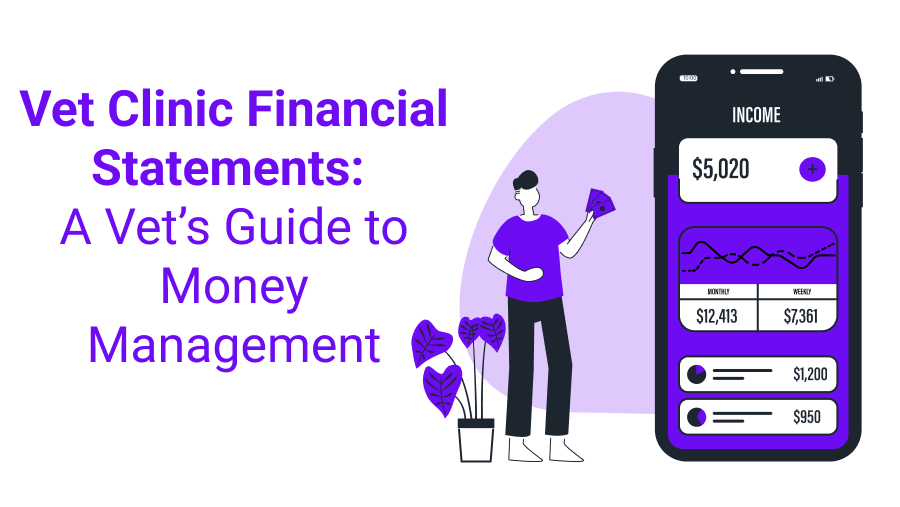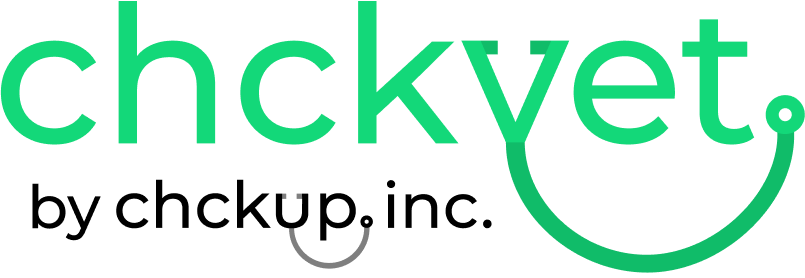Table of Contents
Why Are Veterinary Practice Financial Statements So Important?
Which Financial Statements Should Your Accounting Department Monitor?
Income Statement
Balance Sheet
Cash Flow Statement
How Should You Manage Your Financial Reports?
How Does Keeping Track of Statements Help When Selling a Practice?
Veterinary Practice Management Resources to Track Your Finances
Veterinary Practice Financial Statements: A Veterinarian’s Guide to Money Management
Elliott Greenwood
Dec 4, 2023 · 4 min read

Your accounting department can use veterinary practice financial statements to assess the financial health of your operations. See why these records are important and how to maintain them without hassle.
Your veterinary practice invests in numerous resources, such as equipment and staffing, to treat pets. Maintaining a ledger for these expenses can be challenging if you don’t have an in-house accounting department or recordkeeping policy.
Financial statements allow you to track your veterinary practice’s spending and adjust budgets when needed. Knowing how to interpret these documents is essential for the success of your practice.
Why Are Veterinary Practice Financial Statements So Important?
Your veterinary practice offers high-demand services with a relatively low failure rate compared to other industries. Still, without proper financial recordkeeping, you can easily misallocate money and suffer from high overhead costs.
These financial statements help you visualize your practice’s daily, monthly, and annual expenses, providing justification for policy changes.
In fact, if you know what to look for you can use raw data from these documents to identify financial problems well before your practice becomes too expensive to manage.
As a practice owner, you depend on a knowledgeable bookkeeper and accounts receivable department to communicate discrepancies as they arise.
However, you should also take the time to educate yourself on how to read these financial statements so you can better in-practice decision-making and truly understand what drives and grows your veterinary practice.
For example, knowing how to read the financial statements of your veterinary practice allows you to make better business decisions, like knowing and deciding where to cut costs.
Which Financial Statements Should Your Accounting Department Monitor?
While there are multiple different reports you could look at, I’m just going over the three primary financial statements that you can use to track your veterinary practice’s performance.
Income Statement
Balance Sheet
Cash Flow Statement
Income Statement
The income statement is typically the financial report you analyze first.
The primary purpose that drives the income statement is to outline revenue streams and cost segments of your veterinary practice.
What percentage of your practice’s revenue comes from
Annual Checkups
Surgeries
In-House Pharmacy/Perscriptions
Boarding
Merchandise
Etc.
What is the cost breakdown of your veterinary practice, how does it contribute to earned revenue, what percentage of revenue are these costs, and how did they increase or decrease compared to a previous period?
Think:
Building leases
Practice materials
Electric bills
Staff salaries
Software
Marketing & Promotions
Etc.
The Income statement tracks revenue annually, biannually, or whatever time period you would like, depending on the reporting period.
To learn more about the income statement and what makes it important, continue reading here.
Balance Sheet
A balance sheet is a document that provides crucial information on your practice’s tangible assets, liabilities and retained earnings.
Unlike the income statement, the balance sheet tracks a moment of time instead of a period of time - a specific date instead of a month-long period. Think of it as a screenshot or photo of the health of your veterinary practice for a specific moment in time.
You use the balance sheet to see your practice’s total liabilities and any changes that impacted your bottom line the previous year.
To learn more about the balance sheet and what makes it important, continue reading here.
Cash Flow Statement
Cash flow statements show the movement of money going into and out of your veterinary practice.
The Cash Flow Statement categorizes cash flows into 3 categories
Operational activities
Investment activities
Financing activities
The Cash Flow Statement details how fast your practice collects or spends money and who receives it.
To learn more about the cash flow statement and what makes it important, continue reading here.
How Should You Manage Your Financial Reports?
Separating your costs into three categories is one of the best ways to manage your practice using your financial reports:
Fixed expenses
Includes expected costs, such as employee salaries, insurance, withholding taxes, and delinquency accounts from clients that don’t pay their bills.
Generally, these expenses will not change and are relatively simple to keep track of in a spreadsheet.
Direct expenses
Include tools and equipment you may need to purchase for individual treatments, such as anesthetics.
These orders vary from week to week and month to month, necessitating the need for accurate financial reporting.
Always take inventory of your direct expenses down to the smallest purchase.
Discretionary expenses
Includes items like desk supplies, marketing costs, fuel, and food
Can cut into your revenue if you aren’t careful.
It’s a good idea to set a strict annual budget to avoid overspending on these things.
You can adjust the annual budget corresponding to what you spent the previous year.
How Does Keeping Track of Statements Help When Selling a Practice?
Years of accurately reported financial statements are significantly beneficial if you decide to sell your practice. Prospective buyers can use these reports to determine the profitability of your practice and whether it has room to grow. Well-managed finances will lead to better offers.
Veterinary Practice Management Resources to Track Your Finances
Knowing how to keep and read your veterinary practice financial statements is the key to not just managing a well-rounded budget, but managing an operationally excellent veterinary practice.
Unfortunately, many practices neglect these responsibilities and waste thousands of dollars on overhead costs. You can avoid the same mistake by investing in veterinary practice management tools to streamline the accounting process.
Schedule a demo today to see how we can help you intelligently shape the future of your practice.
Are you a veterinary professional?
If you're in the veterinary field and you're interested in giving your practice the extra hands it desperately needs, book an 8 minute demo with Chckvet. Our platform helps busy practices handle call overload, boost revenue per client, and increase client satisfaction by providing actionable insights and easy-to-use technology to help you stay on top of everything.
Book an 8 minute demo
Looking for a better solution?
Discover how Chckvet can help fill your schedule and give your team their time back.
